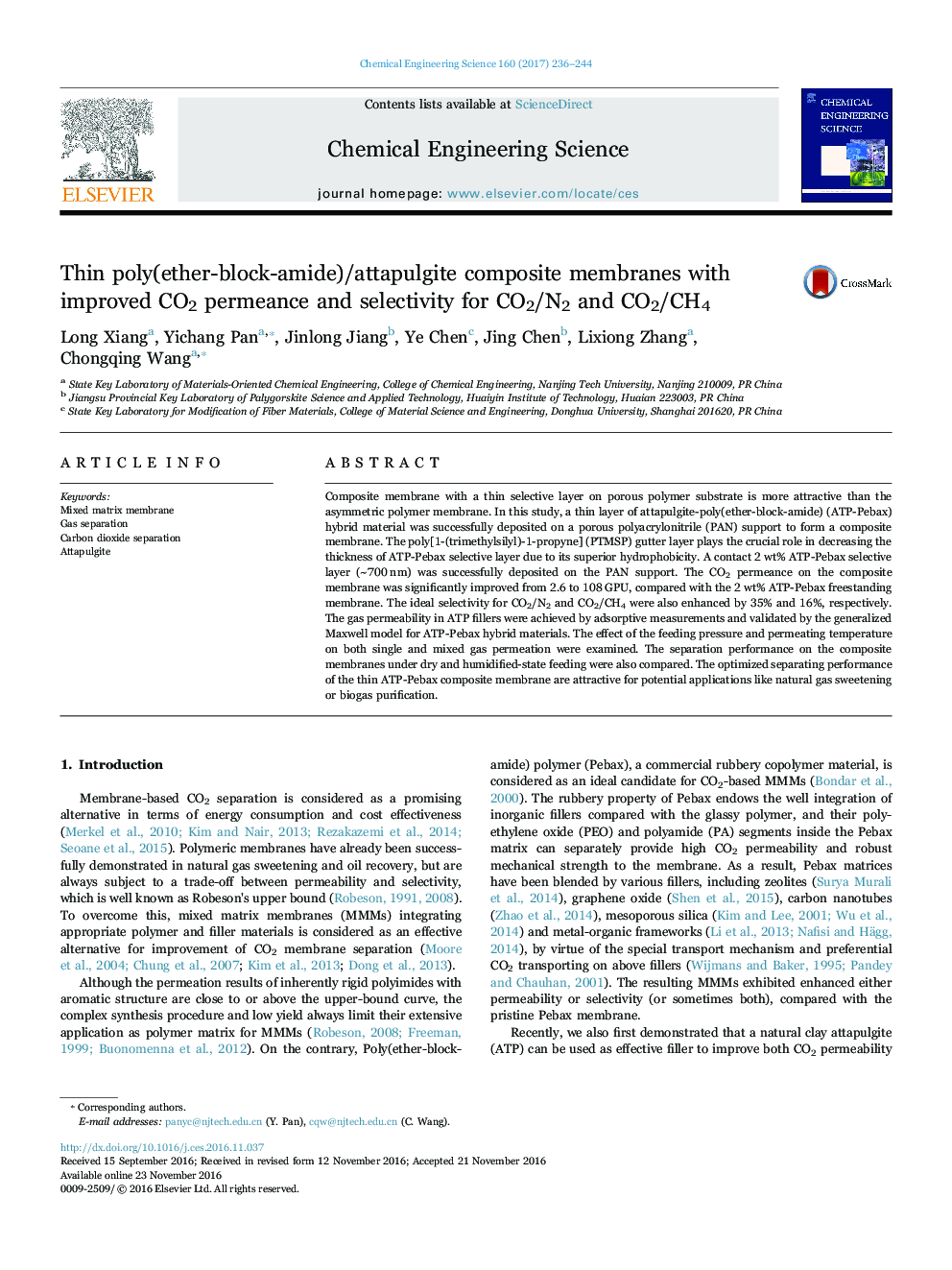| Article ID | Journal | Published Year | Pages | File Type |
|---|---|---|---|---|
| 6467724 | Chemical Engineering Science | 2017 | 9 Pages |
â¢Thin ATP-Pebax film (~700 nm) composite membranes were successfully fabricated.â¢The CO2 permeance was 40-fold improved from the reduction of membrane thickness.â¢The gas permeability in ATP fillers were first achieved from adsorptive tests.â¢Optimized permeating parameters in mixed-gas permeation were also evaluated.
Composite membrane with a thin selective layer on porous polymer substrate is more attractive than the asymmetric polymer membrane. In this study, a thin layer of attapulgite-poly(ether-block-amide) (ATP-Pebax) hybrid material was successfully deposited on a porous polyacrylonitrile (PAN) support to form a composite membrane. The poly[1-(trimethylsilyl)-1-propyne] (PTMSP) gutter layer plays the crucial role in decreasing the thickness of ATP-Pebax selective layer due to its superior hydrophobicity. A contact 2Â wt% ATP-Pebax selective layer (~700Â nm) was successfully deposited on the PAN support. The CO2 permeance on the composite membrane was significantly improved from 2.6 to 108 GPU, compared with the 2Â wt% ATP-Pebax freestanding membrane. The ideal selectivity for CO2/N2 and CO2/CH4 were also enhanced by 35% and 16%, respectively. The gas permeability in ATP fillers were achieved by adsorptive measurements and validated by the generalized Maxwell model for ATP-Pebax hybrid materials. The effect of the feeding pressure and permeating temperature on both single and mixed gas permeation were examined. The separation performance on the composite membranes under dry and humidified-state feeding were also compared. The optimized separating performance of the thin ATP-Pebax composite membrane are attractive for potential applications like natural gas sweetening or biogas purification.
